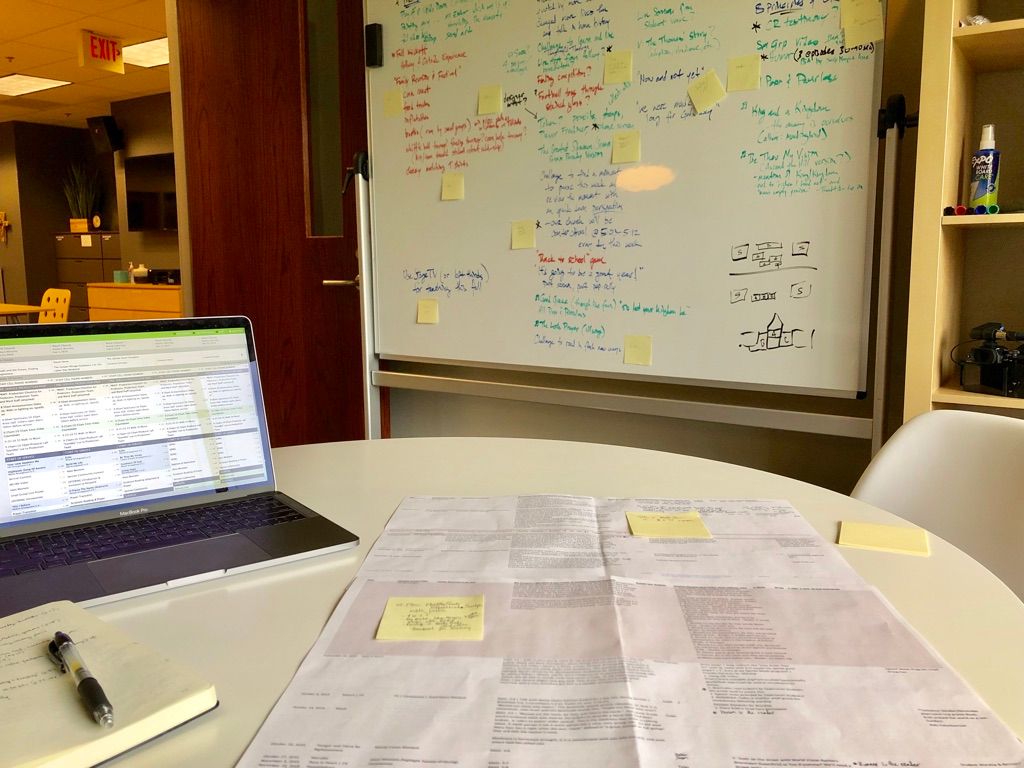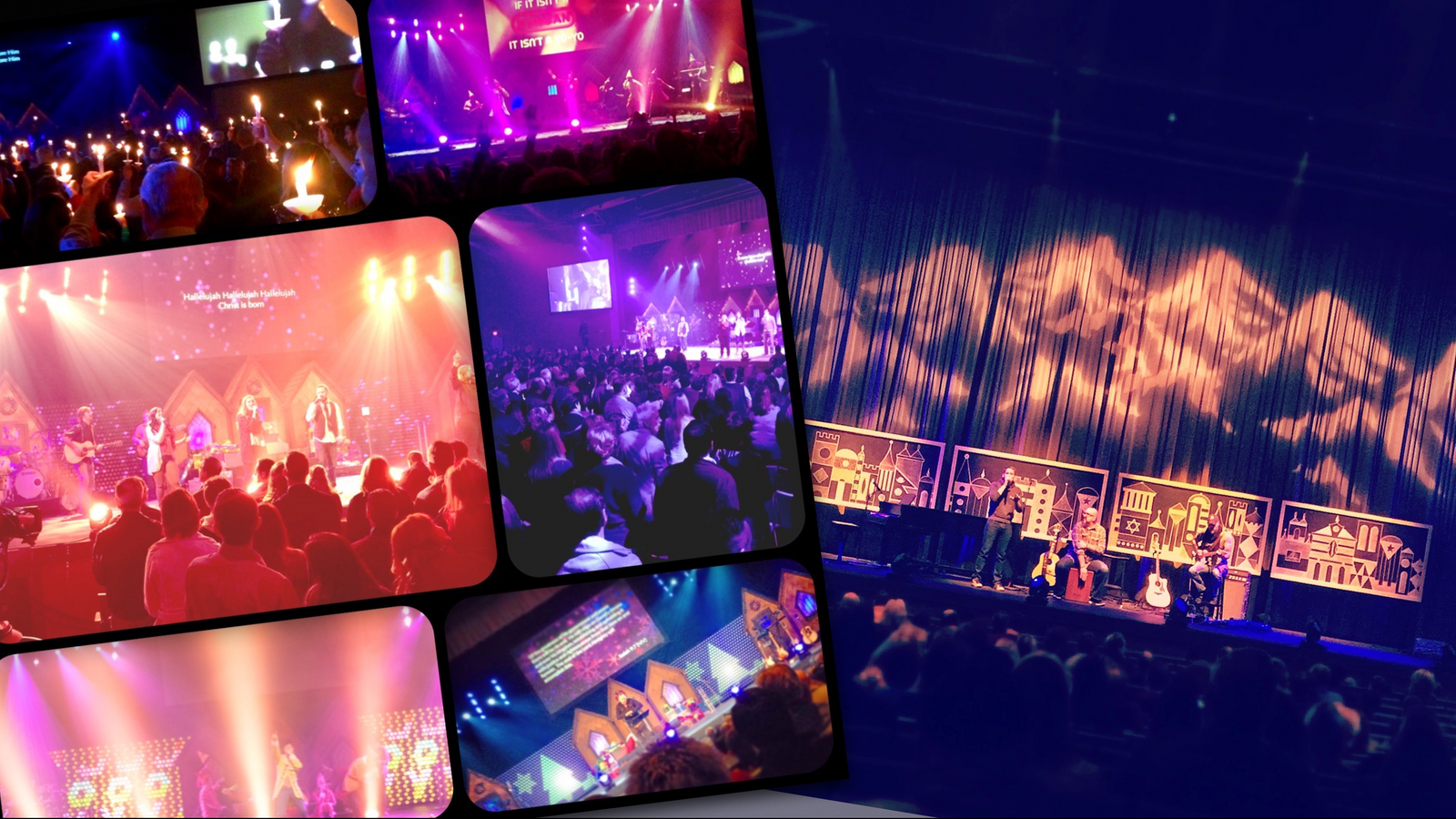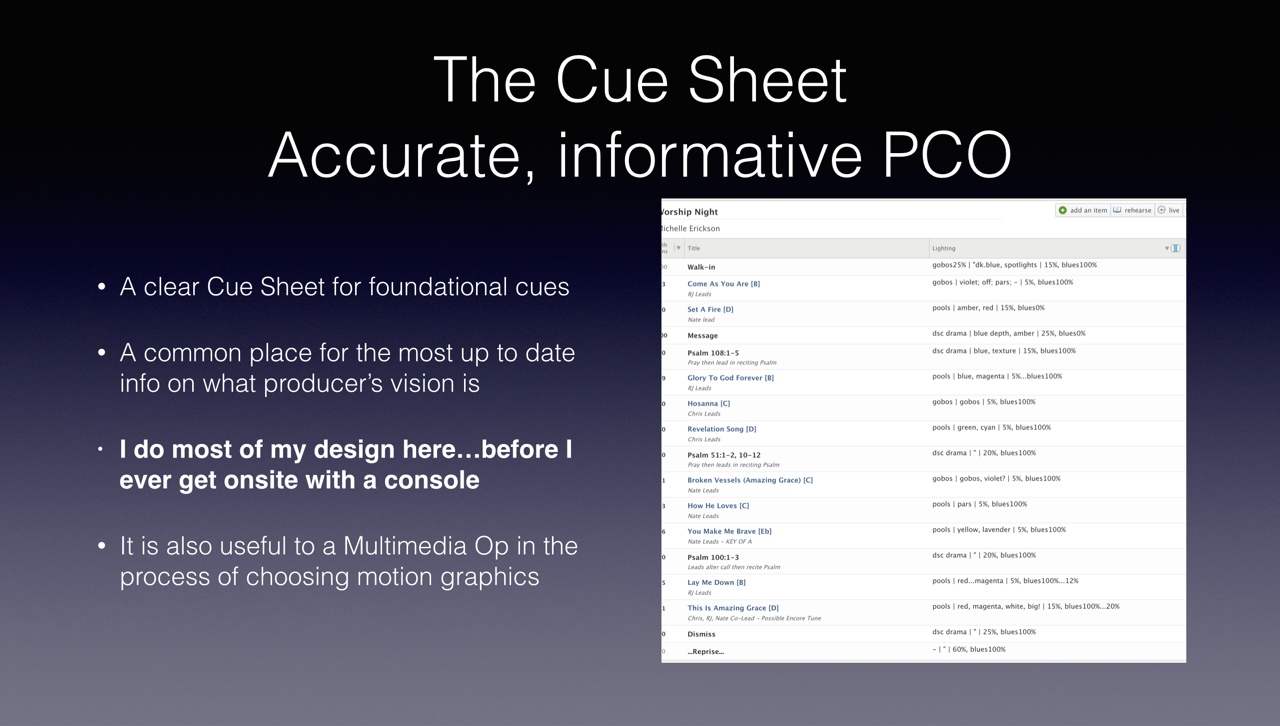
So, the phrase is unprecedented. Never been done before. Fluid. All the things we have been hearing in this season.
Some of you know that back in February, I started a new full time job as Creative Director for Woodside. I was basically there for 5 weeks and then my job description completely transformed. I went from responsible for arts and production at our main campus to being the producer of what we streamed for all 14 of our campuses!
I was still in that season of my new tenure where I was resisting the urge to start bringing change. My job was to observe everything and meet people. Leading things forward would come in due time and at the right pace.
That all immediately shifted with a conference call on a Thursday afternoon where we decided that we wouldn’t have guests. I declared that we could do a live-to-record of each of the parts (music, sermon, panel discussion, etc.) in time to edit it all into a good finished product that felt authentic and compelling. Then I got on the phone and we started prepping. 36 hours later, we were rehearsing. A totally fresh feel to our setting with recording on the front steps with a "b-stage" type of feel for the music, and transitions mapped out for the communication to feel great from stools down front with the regular broadcast cameras locations moved up close to translate better for an online audience to feel intimately connected even though they weren’t on-site. A couple hours later, we were recording. We captured each of the parts; and later that Saturday afternoon, we successfully wove the different segments into what was received as a blessing of a weekend service that was streamed on Sunday.
The following week, I changed it up and took us out to the lobby to take our experience from our "living room" to those of everyone at home.
One week later, we clamped down even further as a state. We were now fully Shelter In Place with the charge to not leave the home if not an "essential worker." We lived this out. We had set our senior pastor up with a camera/mic/lighting rig at his house. One of our other campus pastors had a couple cameras with him that he wisely put in his car. Several phone calls and Zoom/Teams meetings to plan our service. Some more phone calls, text threads, and FaceTime coaching calls as there was a lot of work to give example setups of the video and audio and coaching decent lighting and shot compositions. Being natural in front of the camera is a legit thing. The tricky part was getting our Music Director to create click and guide for the husband/wife to sing and play along with.
The creation of that was a key part of a little secret project I worked on in the background. I had our MD record himself playing piano and signing on the chorus of one of the songs. I talked with a number of the Worship Directors from various campuses and had them take that click/guide and record themselves playing their instrument and singing along with the choruses. I sold this to them to give a try of a prototype of an idea that I imagined… I surprised everyone by editing a virtual band that joined in from so many other living rooms as a way to continue the "our living rooms to yours" that we could have be a really special part of the season. It aired that Sunday with great reception to the moment.
That prototype sold the team and leadership that my idea was worth building on. We did! It was pretty fun. We soon were having nearly a dozen people in our music cast. A leader for each song would be the first to record themselves singing/playing along with the click/guide. That was sent back and reworked as a version that went out to the rest of the cast so that people could be in play and sing in perfect time and harmony to that lead for each song. We developed our process for hosting with the pre-service welcome-to-the-stream, mid-service transitions and announcements, closing action steps. We figured out how to record the sermon with being off camera with a Zoom to coach while the recording was going to the main camera. We began doing creative liturgical moments for the congregation to participate in interactive prayer, scripture readings, and creeds. We also used zoom to do some panel recordings with medical experts and such.
We built ourselves up to be four weeks out in the planning process. We were averaging probably 25 hours of content that we were editing through every weekend. Usually we had 8 to 15 musicians and vocalists including fall rhythm band, strings, and other specialty instruments. In addition to our Central host, each of our 14 campus pastors delivered their sermon.
The music was mixed by one team (a person receiving, labeling, and preQC of claps and such; another to mix songs each week; another to help master and help me hold a brand) while the video was edited by a team usually each person doing a couple songs per week. As mixes would be updated, we would see how that helped steer the video edits and vice versa.
Meanwhile, for communication we would start writing our talking points and scripts a few weeks out. We would be on zoom calls to record central sermon and host. The rest, we were available for coaching the setups and such. A team of three editors handled all the communication parts.
Our Technical Director lined up the parts according to PCO and then I would work final transitions for the Central export. He then would work the remaining 13 to match. All 14 were exported and uploaded and our IT and Social teams made sure that they were posted and hosted well. It was a joy to tune in and watch on Sunday mornings.
I’m really proud of the process documentation that we wrote for leading people to record themselves and have it translate to fit in a compelling manner for a full video production. It was really great to have able to share our "playbook" with mega churches and school districts from around the country. Humbling and encouraging to hear stories of how it was used.
A highlight of the season for was early on where Holy Week we pulled off Good Friday and Resurrection Sunday services. After that weekend, I sent the tally below to our team. It certainly has been an honor and thrill getting to lead in this season.
By my count, last week’s Good Friday and Easter services required:
- 13 computers (with multiple crashes and reboots required as they were pushed past the max) for such tasks as creating music, collecting and filing assets, editing video, mixing audio, producing graphics, polishing transitions and signing off with QC before export.
- 15 sermons / preachers
- 6 hosts for communication, Scripture readings, Creeds, etc.
- Also Communion.
- As well as some special content for First Service and Families.
- 9 songs as well as an organ prelude!
- >100 artists’ content of audio and video were part of our "choir"
Here is that Easter service:
Other services can be found:
Some of my other favorites:
I’ll add some photos to help illustrate this post. For now, let me state that I am super grateful for the team I got to work with and for trust that was put in me to lead. I feel like I was uniquely brought here for this purpose.



 Fun too, to coach blocking for a the broadcast into during the countdown. My friend snapped this photo of yours truly that he used to coach the crew in duplicating the shot composition.
Fun too, to coach blocking for a the broadcast into during the countdown. My friend snapped this photo of yours truly that he used to coach the crew in duplicating the shot composition.


